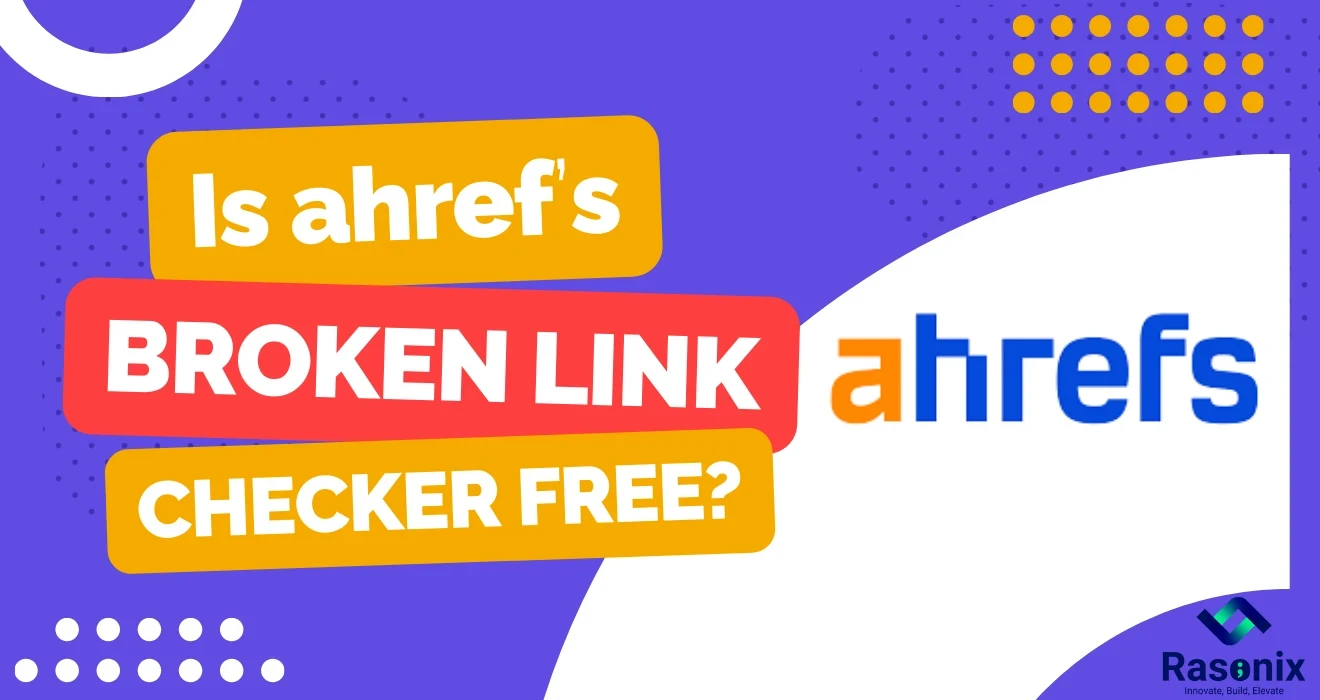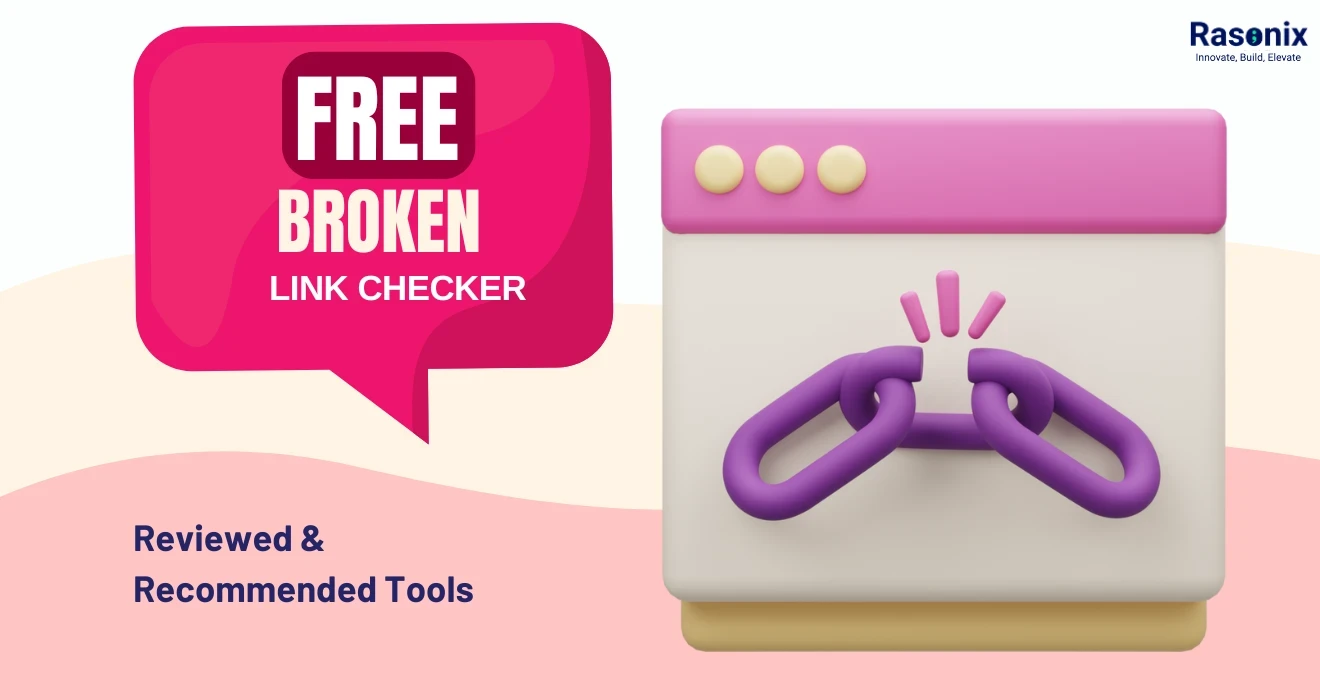Did you know that a well constructed website uses links within itself? When I first began building websites, I never realized how powerful internal links were. I focused on design, color styles, and cool animations, but it was far more worthwhile to consider how internal links would affect user engagement with my content and Google's crawl of my site. If you are serious about improving SEO and making visitors navigate around the website with ease, you simply must master the interlinking. In this blog, let's explore the example of internal linking in HTML.
What is Internal Linking in HTML (And Why Should You Care)?
Internal linking is simply linking one of your website's pages to another page in the same domain. It’s how your homepage links to your blog, how your blog links to your services page, and how your "About Us" page leads you back to your homepage.
Think of your website like a city. Each page is a building. Without roads (links), people (users and crawlers) would be lost. Internal links are those roads.
Search engines like Google use internal linking to crawl your site, index your pages, and understand the structure. And for users, it helps them to find relevant information easily, which helps reduce bounce rate as users find engaging content.
According to a SEMrush study in 2024, websites that optimized internal linking, had a 22% increase in average page views per session.
Understanding HTML Links: The Basics
Before diving deep into internal links, let’s start with the core of all hyperlinks: the <a> tag.
Here’s the basic syntax:
|
<a href="destination.html">Anchor Text</a>
|
● <a> stands for “anchor”.
● href is the hyperlink reference that tells the browser where to go.
● The text between the tags is what the user sees and clicks.
Real-life examples of internal linking in HTML
Here are multiple real-life examples of internal linking in HTML from my own projects.
1. Homepage to About Page
|
<a href="about.html">About Our Company</a>
|
2. Linking Between Blog Posts
From your blog index page:
|
<a href="blog/javascript-vs-html.html">Read: JavaScript vs HTML</a>
|
From one blog to another:
|
<a href="seo-guide.html">Check our Complete SEO Guide</a>
|
3. Navigation Menu (Global Internal Links)
|
<nav>
<ul>
<li><a href="index.html">Home</a></li>
<li><a href="portfolio.html">Portfolio</a></li>
<li><a href="contact.html">Contact</a></li>
</ul>
</nav>
|
4. Footer Section
|
<footer>
<p><a href="privacy-policy.html">Privacy Policy</a></p>
<p><a href="terms.html">Terms of Use</a></p>
</footer>
|
5. Call-to-Action (CTA) Button
|
<a href="get-started.html" class="cta-button">Get Started</a>
|
These examples of internal linking in HTML are not just about connecting pages, they’re about guiding users intentionally through your website journey.
Linking to Specific Sections with IDs (Fragment Links)
Let’s say your About page is long and has multiple sections like “Our Mission”, “Our Vision”, and “Our Team”.
You can create links that jump to those sections directly.
1. Assign an ID to the Section
|
<h2 id="mission">Our Mission</h2>
<p>We aim to revolutionize education...</p>
|
2. Create a Link to That Section
|
<a href="#mission">Read Our Mission</a>
|
You can also combine this with a file path for multi-page navigation:
|
<a href="about.html#mission">Our Mission (on About Page)</a>
|
These examples of internal linking in HTML help improve usability, especially on long-form pages.
Real Scenario: Internal Linking in a Product Website
On one of my client’s product websites, we had the following structure:
● index.html
● products.html
● pricing.html
● faq.html
Here's how we internally linked everything:
|
<p>Browse our <a href="products.html">full product catalog</a> and compare <a href="pricing.html">pricing plans</a> that suit your business. If you have questions, check our <a href="faq.html">FAQ section</a>.</p>
|
By doing this, users moved organically from one page to another, reducing bounce rates and boosting conversions by over 30%.
This is a textbook example of internal linking in HTML being directly tied to business outcomes.
For Users:
● Better Navigation: Users don’t get lost. They move from topic to topic effortlessly.
● More Time on Site: When readers discover related articles, they stick around longer.
● Easier Access to Information: Linking to FAQs, contact forms, or pricing tables makes your site feel more polished and thoughtful.
For SEO:
● Improved Crawlability: Googlebot follows internal links to find all your pages.
● Page Authority Distribution: Internal links pass PageRank across your site. Your strongest pages can lift weaker ones.
● Lower Bounce Rate: Internal links reduce bounce rate, one of the signals search engines monitor.
● Better Keyword Relevance: You tell Google what the linked page is about by using context-rich anchor text.
SEO Benefits of Internal Linking
You might be wondering why does internal linking matter for search engines?
Here’s what I’ve seen firsthand:
● Improved Crawlability: Google bots can discover deeper pages if you interlink them properly.
● Page Authority Flow: Pages like your homepage often have the most authority. Internal linking distributes this authority (PageRank) to other pages.
● Reduced Bounce Rate: Linking to related pages keeps users engaged longer.
● Contextual Relevance: Using relevant anchor text helps Google understand content relationships.
Again, an effective example of internal linking in HTML might look like this:
|
<p>New to our platform? Start with our <a href="getting-started.html">Getting Started Guide</a>.</
|
HTML Code Example:
<h2 id="our-mission">Our Mission</h2>
<p>We aim to revolutionize the way people learn coding...</p>
<p>Jump to <a href="#our-mission">Our Mission</a> section</p>
This is another effective example of internal linking in HTML, especially for long-form content or single-page applications.
Best Practices for Internal Linking
Here’s what I’ve learned the hard way over the years:
1. Use Contextual Links
Link where it makes organic sense within your content. Don’t force it.
2. Use Descriptive Anchor Text
Avoid generic phrases like “click here”. Use meaningful, SEO-friendly text instead.
Examples of Good Anchor Text:
<a href="services.html">Explore Our Web Development Services</a>
<a href="blog/html-linking-guide.html">Internal Linking in HTML – Complete Guide</a>
Bad Examples:
<a href="services.html">Click here</a>
<a href="page2.html">More info</a>
3. Prioritize Key Pages
Link often to pages that matter: high-converting landing pages, pillar content, product pages.
4. Don’t Overdo It
If every sentence has a link, it’s overwhelming. Aim for 3–5 contextual links per 1,000 words.
5. Check for Broken Links
Use tools like Screaming Frog or Ahrefs to routinely audit internal links.
6. Strategic Placement
Menus, sidebars, footers, and "Related Articles" sections are perfect for internal links.
Common Internal Linking Mistakes I’ve Made (So You Don’t Have To)
● Over-optimized anchor text: Stuffing exact-match keywords.
● Generic links: “Click here” doesn’t help users or Google.
● Irrelevant linking: Linking just for the sake of it without context.
● Broken paths: Updating slugs without updating internal links.
● Circular linking: Linking back to the same page with no added value.
Each of these mistakes can hurt your SEO and user trust. Fixing them helped me recover traffic and improve user experience on multiple client websites.
Tools to Help You Identify Internal Linking Opportunities
If you’re managing a large site, manual linking can be hard. These tools saved me hours:
● Ahrefs: Their Site Audit tool flags internal linking gaps and opportunities.
● SEMrush: Offers internal link reports and optimization suggestions.
● Yoast SEO (for WordPress): Gives real-time internal linking tips as you write.
● Screaming Frog: Great for scanning broken or orphaned pages.
These helped me identify example of internal linking in HTML that I’d otherwise overlook.
Real-World Example: How Internal Linking Boosted One of My Blogs
In one of my tech tutorial blogs, I had an article on “Best HTML Practices”. After internally linking it to four related posts (e.g., “How to Use the Anchor Tag,” “Basic HTML Tags You Should Know”), the average time on page increased from 1:42 to 3:08. Also, the bounce rate dropped by 15% in two weeks.
This proves that a thoughtful example of internal linking in HTML is not just a technical element, it’s a growth lever.
Key Takeaways
Let’s quickly recap what we’ve learned:
● Internal links connect one page of your website to another page on the same domain.
● The <a> tag is your best friend.
● Using IDs lets you link to specific sections within a page.
● A solid example of internal linking in HTML can improve user experience and SEO performance.
● Use descriptive anchor text and don’t over-optimize.
● Avoid broken or irrelevant links.
● Use tools to identify opportunities and gaps.
Conclusion:
If you've made it this far, you now understand why internal linking isn't just a good-to-have, it's essential. From a simple <a> tag to complex site structures, mastering internal linking in HTML empowers you to:
● Create seamless navigation for your users
● Guide both visitors and search engines to your most important content
● Boost rankings through smarter link equity distribution
● Improve page engagement, reduce bounce rates, and ultimately increase conversions
Whether you're linking your homepage to a product page, or adding a smooth scroll to contact-us, every internal link you add is a step toward a more intelligent, user-friendly website.
So, if you're serious about maximizing SEO and user experience through well-structured internal linking, but not sure where to start, or simply don’t have the time, we’ve got your back.
Let Rasonix Build You a Smarter Website
At Rasonix, we specialize in crafting SEO-optimized websites that aren't just beautiful, they're built to perform. Our experts ensure your internal linking structure is spot-on, guiding your visitors effortlessly and improving your search visibility.
✔ SEO-First Architecture
✔ Smart Internal Linking for Engagement & Ranking
✔ Fully Responsive Design
✔ Fast Load Times & User-Centric Navigation
Ready to level up your site’s performance?
Get in touch with Rasonix today and let’s build a website that works as hard as you do.


















 Subscribe Now
Subscribe Now